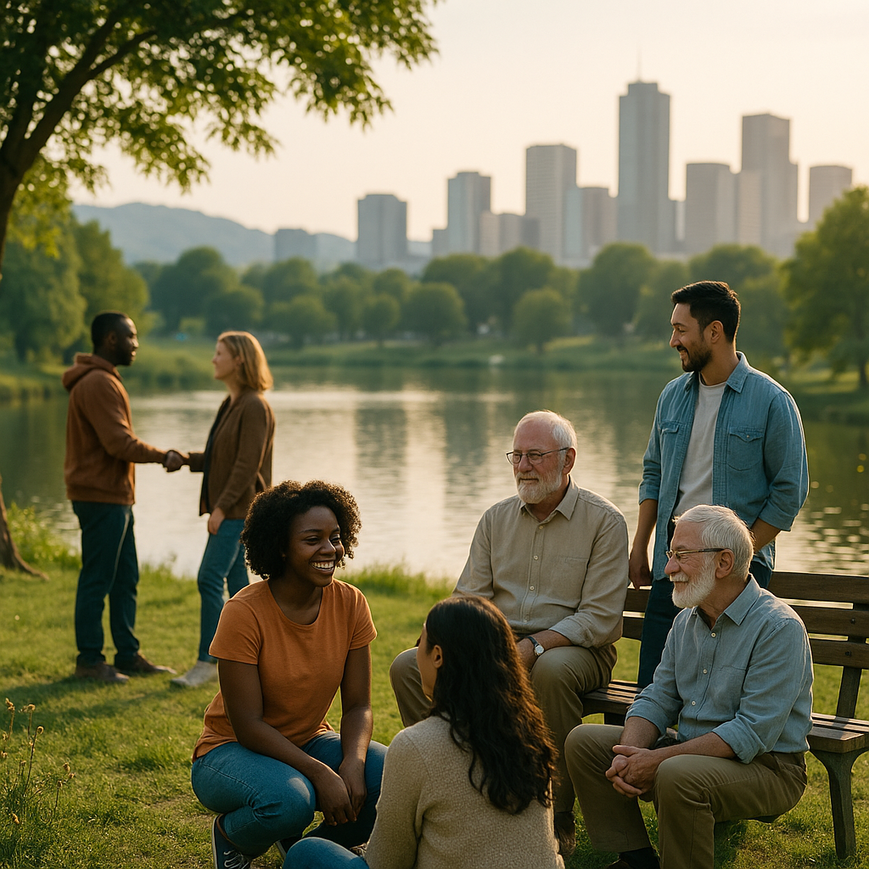
Building Community In An Isolated World: Practical Steps For Connection And Resilience
Understanding Community in Times of Isolation
In today’s rapidly changing world, the concept of community has taken on new dimensions, particularly within the context of increased isolation. Community, defined broadly as a group of individuals who share common interests, values, or goals, plays a crucial role in combating feelings of loneliness and disconnection. Research indicates that belonging to a supportive community can significantly enhance mental health, providing emotional support and fostering resilience during challenging times [Source: National Institutes of Health].
Isolation, whether physical or emotional, can lead to adverse effects such as anxiety, depression, and decreased cognitive function [Source: American Medical Association]. This is where community becomes an essential buffer. The presence of supportive relationships can mitigate these risks, offering a sense of belonging and purpose. Moreover, in the age of technology, virtual communities have emerged as vital spaces for connection. Online platforms enable individuals to foster relationships that transcend geographical boundaries, creating networks of support and shared interests.
Despite the virtual nature of these connections, studies show that they can be just as meaningful as face-to-face interactions, particularly for those who are physically isolated [Source: MDPI]. Today’s understanding of community reflects not only traditional social structures but also the myriad of ways people can connect and support each other, redefining what it means to belong in modern society.
Leveraging Technology to Connect and Engage
Utilizing technology has become essential for maintaining connections within communities, particularly during periods of isolation. Online platforms like Zoom, Facebook, and community apps serve as vital tools for engagement. Regular virtual meetups, such as book clubs or discussion groups, help sustain interaction among members, keeping the spirit of the community alive.
Technology also allows for the creation of private groups where members can share updates, resources, and hold discussions, enhancing community ties and shared experiences. Additionally, initiatives like virtual workshops, skill-sharing sessions, and community projects foster a collaborative environment that encourages participation and strengthens relationships.
Creating Local Support Networks
Building local support networks involves intentional efforts to connect individuals within the community. Engaging in collective projects, such as organizing neighborhood clean-ups or community gardens, cultivates a sense of belonging and teamwork. Encouraging members to support local businesses further fortifies these connections, demonstrating collective resilience during challenging times.
Furthermore, establishing directories of services, skills, and resources available within the community can facilitate networking and encourage members to lend assistance to one another. Through these efforts, communities can ensure that support is accessible and that no one feels isolated.
Encouraging Inclusivity and Diverse Participation
Fostering an inclusive community where everyone feels welcome and valued involves several key strategies. Firstly, it is vital to promote awareness and education regarding diversity to create an environment where varied perspectives are celebrated. Workshops on unconscious bias and cultural competency can help individuals understand their own biases and improve interactions within the community.
Engagement is crucial; thus, creating forums for feedback through surveys or open discussions encourages all voices to be heard. Addressing physical and virtual accessibility ensures that community spaces and resources are available to everyone, including those with disabilities. Celebrating cultural events through gatherings that highlight various traditions also fosters inclusivity and pride in one’s identity [Source: Urban Gardening for Mental Health].
Sustaining Community Spirit Beyond Isolation
Sustaining community spirit beyond isolation can be achieved through intentional actions that promote connection and engagement. Strategies include regular virtual meetups to maintain engagement, community projects to foster teamwork, and celebrations of personal milestones that reinforce connections.
Encouraging participation in local events and volunteer opportunities nurtures community pride and connectedness. Emotional check-ins and simple messages of support can go a long way in making individuals feel valued and connected. Finally, incorporating mindfulness practices, such as meditation sessions or mindful walks, can enhance emotional well-being and connection among members [Source: Setting Healthy Boundaries].







